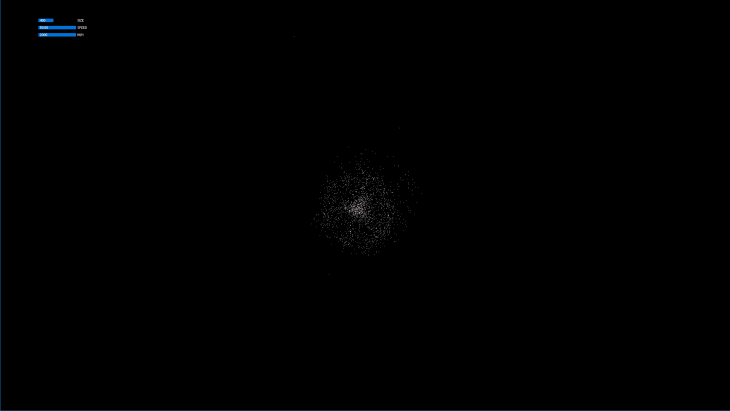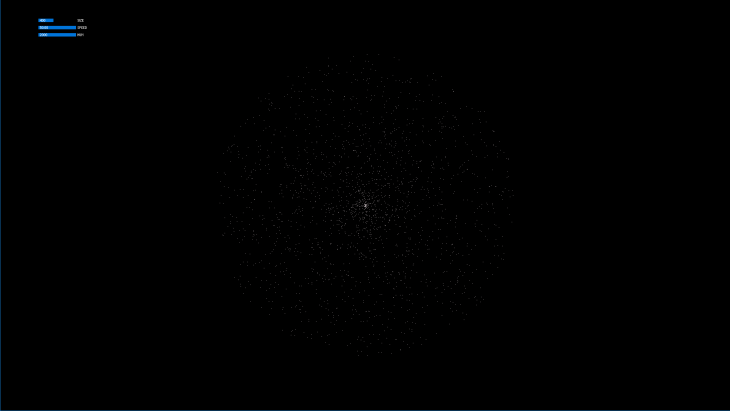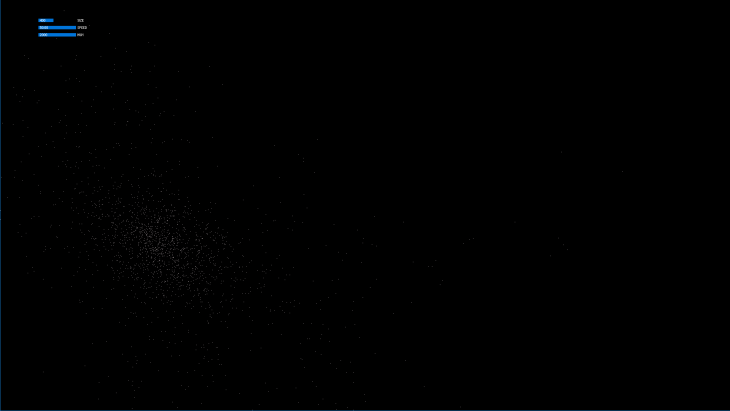Herd of Dots
As part of the second semester for Programming we have been delving into several algorithms that generate form. In this case a swarm has been used as the form finding method. The assignment is about creating a spatial scheme that emerges from coding.
A collection of small dots is gathering in the middle of the screen, the dots move awards each other but do not touch, they’ll keep in safe distance from one another. Depending on which parameters are set, the dots move faster or slower across the herd. The center of the herd will slowly find its way off screen, the dots will then eventually pan out of vision. The dots are moving in a distinctive manner, side by side, swarming around the epicenter of the herd. Try to follow one in particular to understand its behaviour.
Sliders enable the emergent morphogenetic behaviour of the dots. The size, the speed and the amount of dots can be changed in a user interface. These sliders consist out of integers and floating point numbers, running on the library called controlP5.
Once the sketch is running, the herd begins exploding and imploding in the center. The anchor point of the herd will shift as time passes. The arrangement and the shape of the swarm changes over time as well. It all starts off in a symmetrical circular array, which gradually moves into an asymmetrical collection of moving dots.
The dots are generated from a class consisting out of functions in order for the sketch to properly run, the objects are depending on the class in which they are referred to and have a specific value to return to their functions. In return the functions are implemented in the voids that are part of the main sketch. Among others, arrays, PVectors, magnitudes and values are all part of distinguishing voids.


